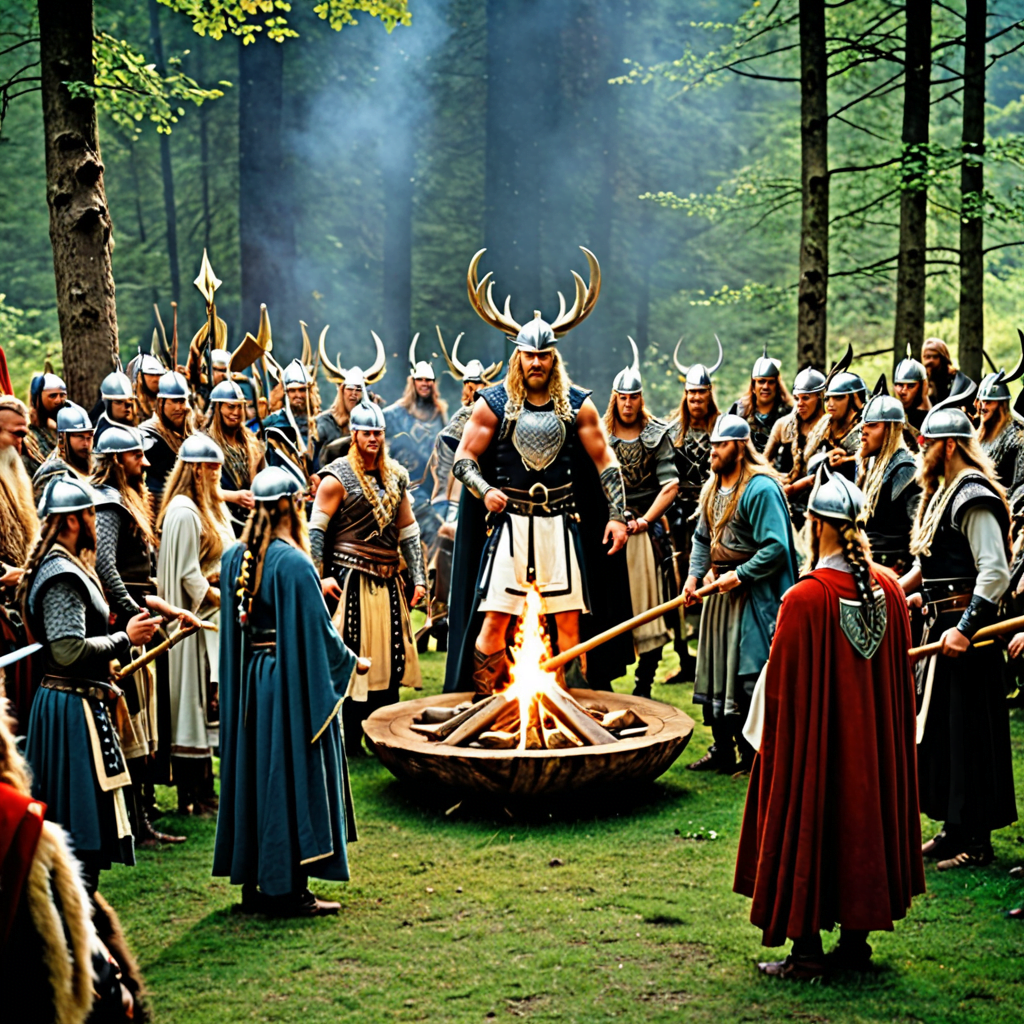The Role of Rituals and Ceremonies in Norse Mythology
Norse mythology, with its rich tapestry of gods, goddesses, and legends, was deeply intertwined with rituals and ceremonies that held significant meaning for the ancient Norse people. These rituals were not just acts of worship but were believed to shape and maintain the fabric of their world. Let’s delve into the importance and practices of rituals and ceremonies in Norse mythology.
1. Importance of Rituals in Norse Mythology
Rituals in Norse mythology served various purposes such as connecting with the gods, seeking their favor, celebrating victories, mourning losses, and marking significant events in life. They were believed to ensure the balance of the cosmos and forge bonds between the divine and mortal realms. The Norse pantheon, including deities like Odin, Thor, Freyja, and Loki, played central roles in these rituals.
2. Types of Rituals and Ceremonies
The Norse people performed diverse rituals and ceremonies throughout their lives. Blóts were offerings or sacrifices made to the gods, often involving animals such as horses or even humans in ancient times. Symbel was a ritual of feasting and toasting to honor the gods and ancestors. Funerary rites were also crucial, with the belief that honoring the deceased properly would secure their place in the afterlife.
3. The Runes and Divination
In addition to physical rituals, Norse mythology was closely tied to the mystical practice of divination through the use of the runes. Runes were the ancient alphabet of the Norse and were believed to carry magical properties. Seers and shamans would use the runes to gain insight into the future, communicate with the gods, and make important decisions for the community.
4. Legacy of Norse Rituals
While the original Norse rituals and ceremonies may have faded with time, their influence can still be felt today. Modern practitioners of Norse paganism, known as heathens, often strive to revive and adapt these traditions in a contemporary context. The enduring legacy of Norse rituals lives on in cultural festivals, art, and literature, connecting us to the spiritual heritage of the ancient Norse people.
FAQs about the Role of Rituals and Ceremonies in Norse Mythology
What are rituals and ceremonies in Norse mythology?
Rituals and ceremonies in Norse mythology are symbolic actions or formal procedures that play a vital role in honoring the gods, marking significant events, and connecting with the spiritual world in the Norse belief system.
What purpose do rituals and ceremonies serve in Norse mythology?
Rituals and ceremonies in Norse mythology serve various purposes, such as establishing and maintaining relationships with the deities, seeking their blessings and protection, commemorating important occasions like births or deaths, and promoting community cohesion.
Which rituals and ceremonies were central in Norse mythology?
Some central rituals and ceremonies in Norse mythology included Blót (sacrificial offerings), Sumbel (ritual toasting), Funerals (honoring the deceased), and Seasonal celebrations like Yule (winter solstice) and Midsummer (summer solstice).
How did rituals and ceremonies influence daily life in Norse society?
Rituals and ceremonies were integral to Norse society, shaping the calendar, social interactions, and religious practices. They provided a sense of structure, meaning, and continuity in the lives of individuals and communities.
Are there any modern practices inspired by Norse rituals and ceremonies?
Yes, modern practices like Asatru and Heathenry




